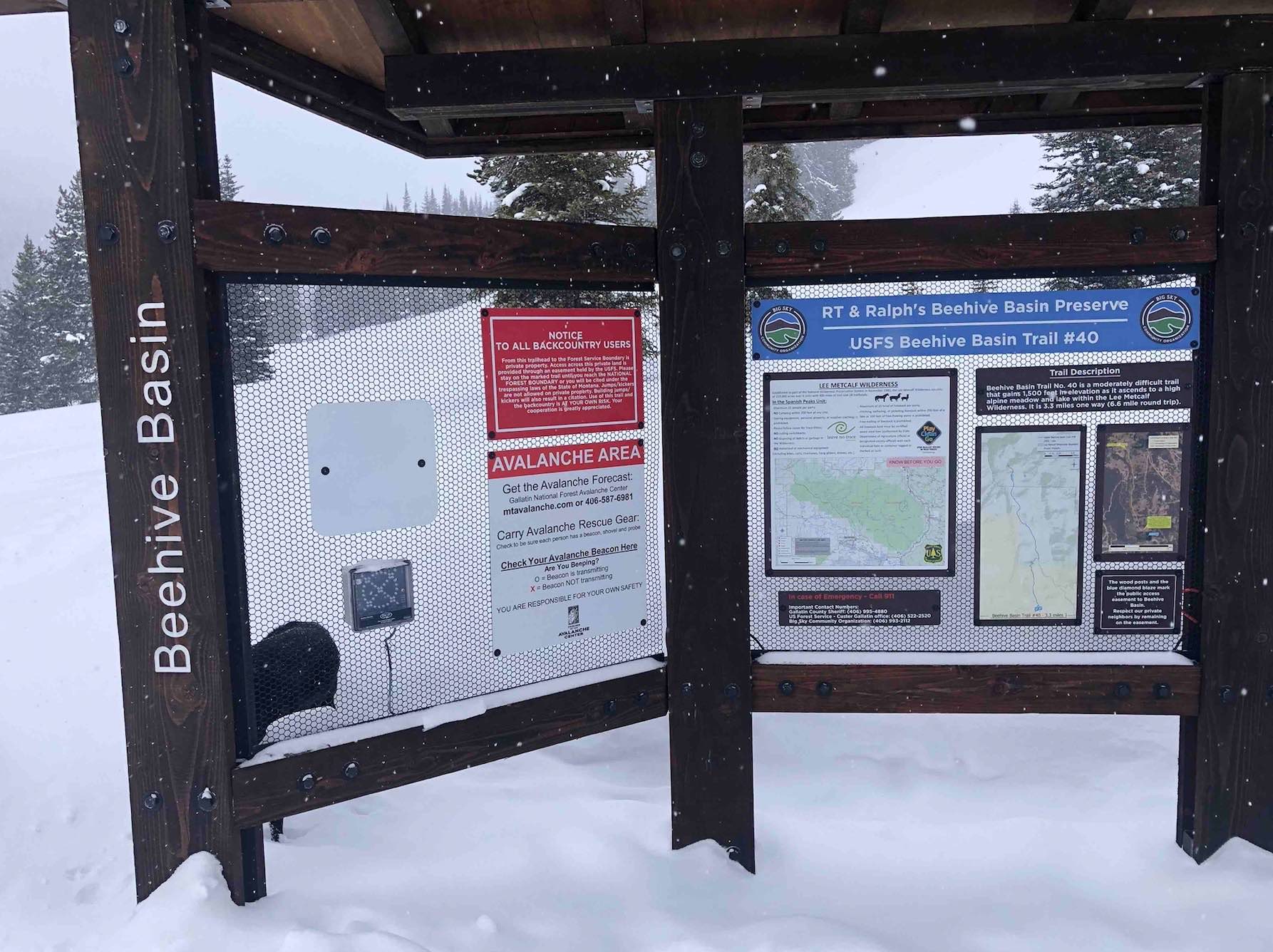By Sara Marino EBS CONTRIBUTOR
The Upper Beehive Basin trail may see more visitors in the summer, but winter is a magical time to explore this spot for a unique backcountry experience, be it on skis or snowshoes. Backcountry winter recreation has inherent risks, keep these tips in mind to help make a safe and memorable day.
Getting there
Follow the signs to Big Sky Resort and continue 1.5 miles past the resort entrance and turn right on to Beehive Basin Road just past the brown U.S. Forest Service Beehive Basin trailhead road sign. Continue up this windy road for 1.8 miles until reaching the trailhead on the left.
Many a vehicle has slid off the final steep windy section in the winter, so use caution. Be prepared for icy roads, have a 4-wheel drive vehicle with snow tires, and remember that downhill traffic must yield to uphill traffic.
The first mile of the trail is a Forest Service easement located on private property. Respect the landowners by staying within the blue blazes mounted on wooden posts that mark the private property boundaries until you reach Forest Service land.
Be avalanche aware
In the 2019-2020 winter season there have been 12 avalanche fatalities in the United States as of Jan. 20. While you can’t predict exactly when or where an avalanche will occur, you can take several steps to reduce your risk.
Bring the basic safety gear of a beacon, probe and shovel, and know how to use them. Big Sky Community Organization and Gallatin National Forest Avalanche Center have teamed up to install a beacon station at the Upper Beehive Basin trailhead. It serves as a safety reminder by displaying a red “X” if you do not have a working beacon and displays a green circle if your beacon is functional and turned on.
Before you head out, check the GNFAC website at mtavalanche.com for a daily condition advisory. Educate yourself. Take an avalanche course, be it the first time or a refresher. Learn more about what to look for and how to dig a snow pit to gauge the stability of the snow you want to ski or board. Again, the GNFAC website is a good resource to find a listing of educational opportunities.
Be prepared
Sometimes outings don’t go quite as we expect, so be prepared. Never go it alone in the backcountry. No matter how experienced you are, if something goes awry, you still need someone to get help. And tell someone at home what your plans are.
Watch the weather and be prepared for conditions that can go from bad to worse quickly. Bring enough layers of clothing to keep you warm, and don’t forget a snack and hydration. Consider wrapping your water bottle in a sock to keep it from freezing, or pack a thermos with your favorite hot beverage. Bring snacks that are easy to eat and have a low-moisture content like dried fruit, jerky, string cheese and chocolate.
Most important, bring your sense of adventure and positive attitude. Discover how fun a winter adventure can be, stop and look for animal tracks in the snow, breathe the crisp, fresh air and appreciate the beauty around you.
Visit bscomt.org to learn more about Big Sky’s parks, trails and recreation programs.
Sara Marino is the Big Sky Community Organization community development manager. BSCO engages and leads people to recreational and enrichment opportunities through thoughtful development of partnerships, programs and places.














